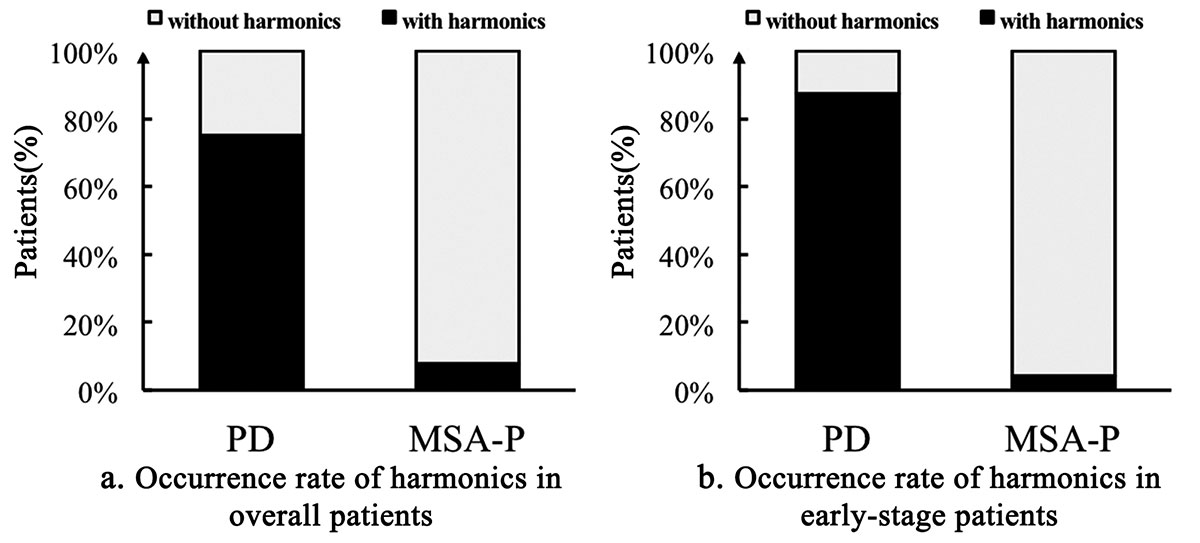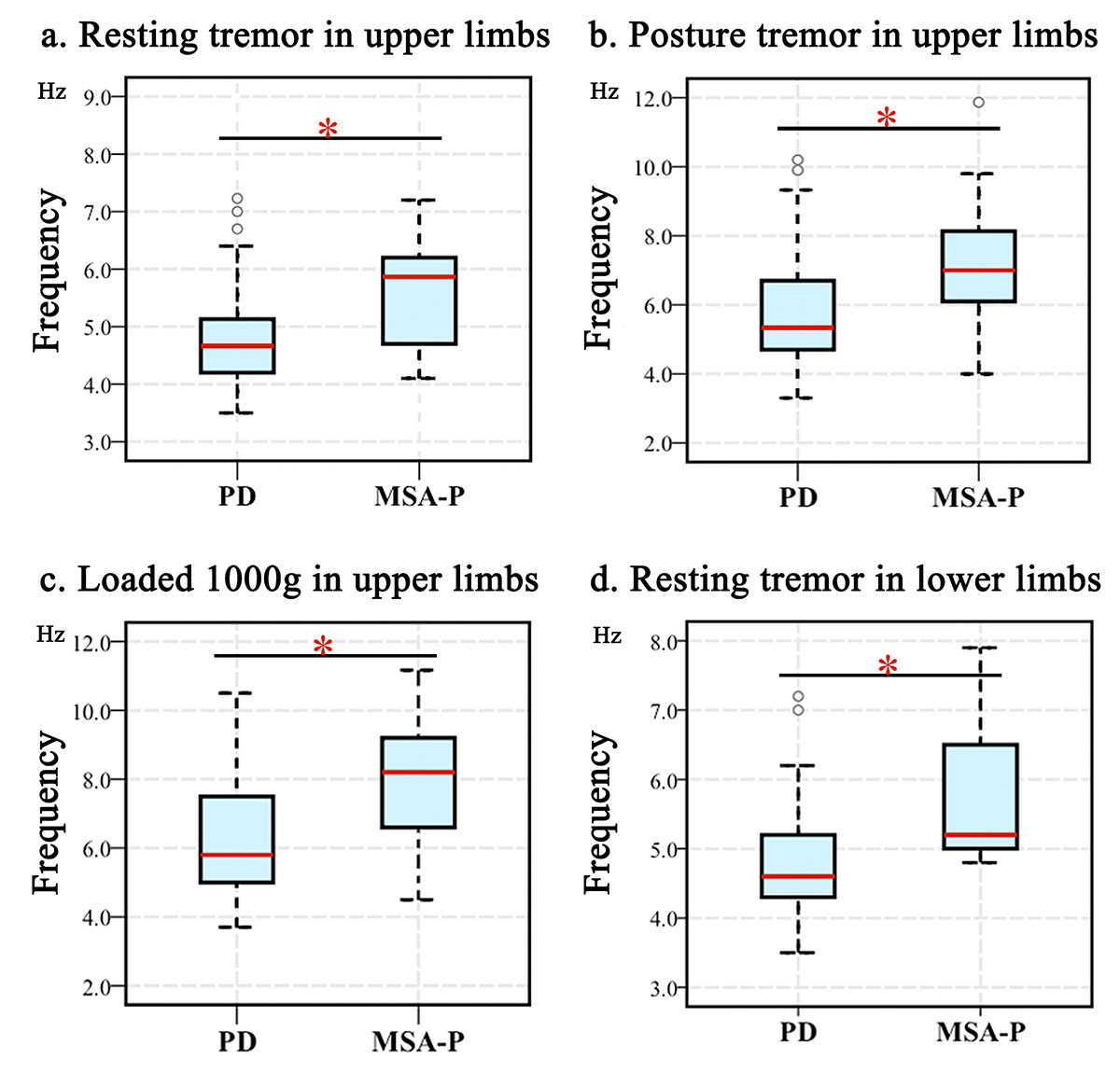Session Information
Date: Tuesday, September 24, 2019
Session Title: Parkinsonisms and Parkinson-Plus
Session Time: 1:45pm-3:15pm
Location: Agora 3 West, Level 3
Objective: We aim to develop a reliable and convenient marker derived from the tremor characteristics to identify the two conditions.
Background: The early-stage identification between Parkinson’s disease (PD) and multiple system atrophy (MSA) is challenging due to the presentation of similar motor symptoms. Till now, a reliable marker with high sensitivity as well as specificity for differentiating PD from atypical Parkinsonian Syndromes is still lack. Tremor analysis with frequency, tremor types and hormanics have markedly contributed to the understanding of diseases with tremor. However, the diagnostic power of harmonics in Parkinsonian disorders is still lack of study.
Method: Ninety-one participants with PD, 65 patients with MSA-P and 28 patients with MSA-C were included. Each of them completed a 30-second test in each of the following conditions: resting, posture state and holding 1000g weight. At the same time, the tremor of upper limbs was then measured using electromyography (EMG) surface electrodes and accelerators. After that, the dominant frequency, tremor occurrence rate in different states and harmonic occurrence rate (HOR) of the tremor were then calculated.
Results: We observed that the dominant frequency of posture tremor in upper limbs of both MSA-P and MSA-C patients was significantly higher than that in PD group (p<0.05). Besides, the resting tremor occurrence rate (75.6% vs 20.4%, χ2=39.181, p<0.001) and the HOR (75.0% vs 7.9%, χ2=46.619, p<0.001) in MSA-P were significantly lower than that in PD group. For early-stage patients with disease duration ≤3 years, the difference of harmonic occurrence rate between PD group and MSA-P group remained (87.5% vs 4.3%, χ2=27.565, p<0.001). The harmonic discriminated early PD from MSA-P with sensitivity of 87.5%, specificity of 95.7%, PPV of 93.3% and NPV of 91.7%.
Conclusion: Our results proved that the harmonic is a reliable measure to separate PD from MSA for the first time. In addition, other parameters such as dominant tremor frequency and tremor types could also provide meaningful information for diagnosis. Generally, the cheap, convenient and non-invasive tremor analysis would promote the diagnostic accuracy of PD and MSA.
References: 1 Charles H. Adler TGB, Joseph G. Hentz, Holly A. Shill, John N. Caviness, Erika Driver-Dunckley, Marwan N. Sabbagh, Lucia I. Sue, Sandra A. Jacobson, Christine M. Belden, Brittany N. Dugger: Low clinical diagnostic accuracy of early vs advanced Parkinson disease. Neurology 2014. 2 Wang S, Aziz TZ, Stein JF, Bain PG, Liu X: Physiological and harmonic components in neural and muscular coherence in Parkinsonian tremor. Clin Neurophysiol 2006, 117(7):1487-1498.
To cite this abstract in AMA style:
D. Su, S. Yang, J. Zhou, H. Pan, T. Feng. Harmonics: A reliable marker in tremor analysis for the differential diagnosis of Parkinson’s disease and multiple system atrophy [abstract]. Mov Disord. 2019; 34 (suppl 2). https://www.mdsabstracts.org/abstract/harmonics-a-reliable-marker-in-tremor-analysis-for-the-differential-diagnosis-of-parkinsons-disease-and-multiple-system-atrophy/. Accessed October 18, 2025.« Back to 2019 International Congress
MDS Abstracts - https://www.mdsabstracts.org/abstract/harmonics-a-reliable-marker-in-tremor-analysis-for-the-differential-diagnosis-of-parkinsons-disease-and-multiple-system-atrophy/


